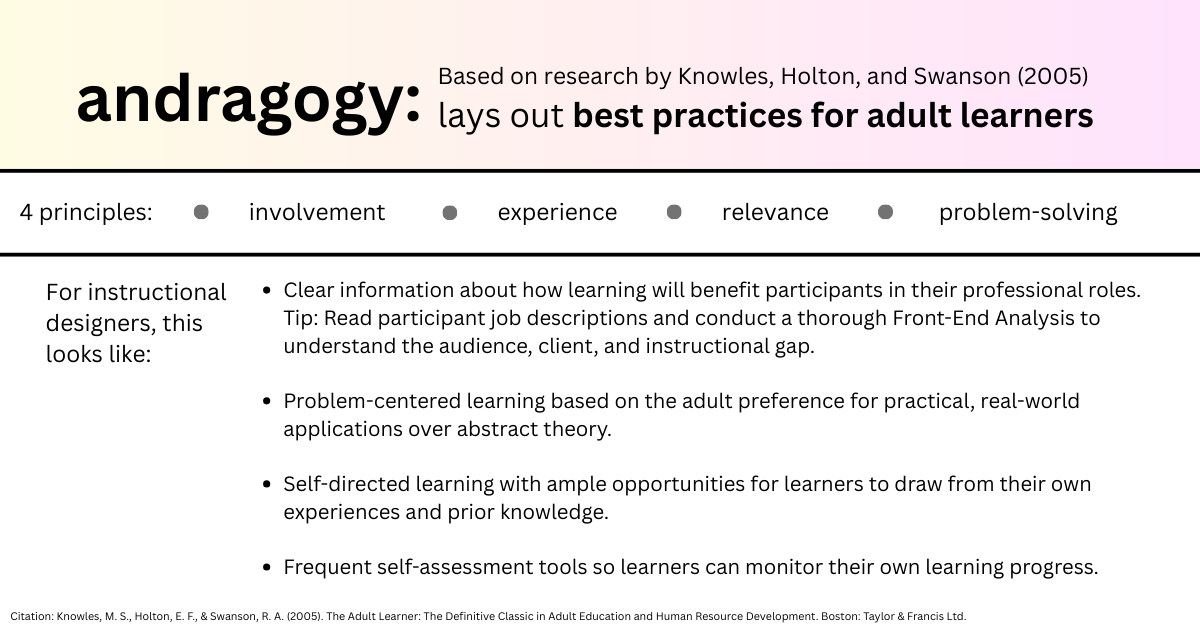Application of Learning Theories
Strong instructional design is not dependent on the use of flashy tools. It starts with a strong foundation in adult learning theories and best practices for maximizing learning. The following sections outline some of the learning theories I have incorporated into my own philosophy of instructional design.
Andragogy - Adult Learning Theory
Knowles, Holton, and Swanson’s Theory of Andragogy (2005) lays out 4 principles of adult learning. Andragogy emphasizes that adult learners are self-directed, bring a wealth of experience to the learning environment, are goal-oriented, and require relevance and immediate application of their learning in the real world.
Image created in Canva
Universal Design for Learning (UDL)
Universal Design for Learning (UDL) is is a framework to design instructional experiences that let all learners access learning in meaningful ways. The ultimate aim is learner agency. Careful planning with a UDL lens aims to create learning experiences that are purposeful and engaging for a diverse audience.
There are three main principles of UDL are as follows:
Engagement — motivate learners by tapping into interests, offering choices, and ensuring relevance
Representation — present information in diverse ways so learners can perceive, interpret, and understand content.
Action & Expression — allow learners different ways to demonstrate what they know and to act on their learning.
This course on cybersecurity applies these principles in the following ways:
Intentional use of choice and autonomy through mixed learning format. In-person learning frequently leverages social aspects of discussion and small group work, while self-paced modules allow for flexibility and can be completed at the learner's own pace.
Relevant, real-world connections to data guide discussions about how learning connects to current issues.
Encouraging learners to act, express, and reflect in diverse ways. This course incorporates: group role-play scenarios, interactive digital tasks, collaborative work, data analysis and multiple opportunities for reflection and feedback.
More information about Universal Design for Learning can be found at: https://udlguidelines.cast.org/
Backward Design
Wiggins and McTighe propose their theory of Backwards Design in their book Understanding by Design (1998, 2005). By starting the planning process by defining exactly what you want learners to achieve you can better ensure alignment to learning goals throughout the planning process.
Image created in Canva



